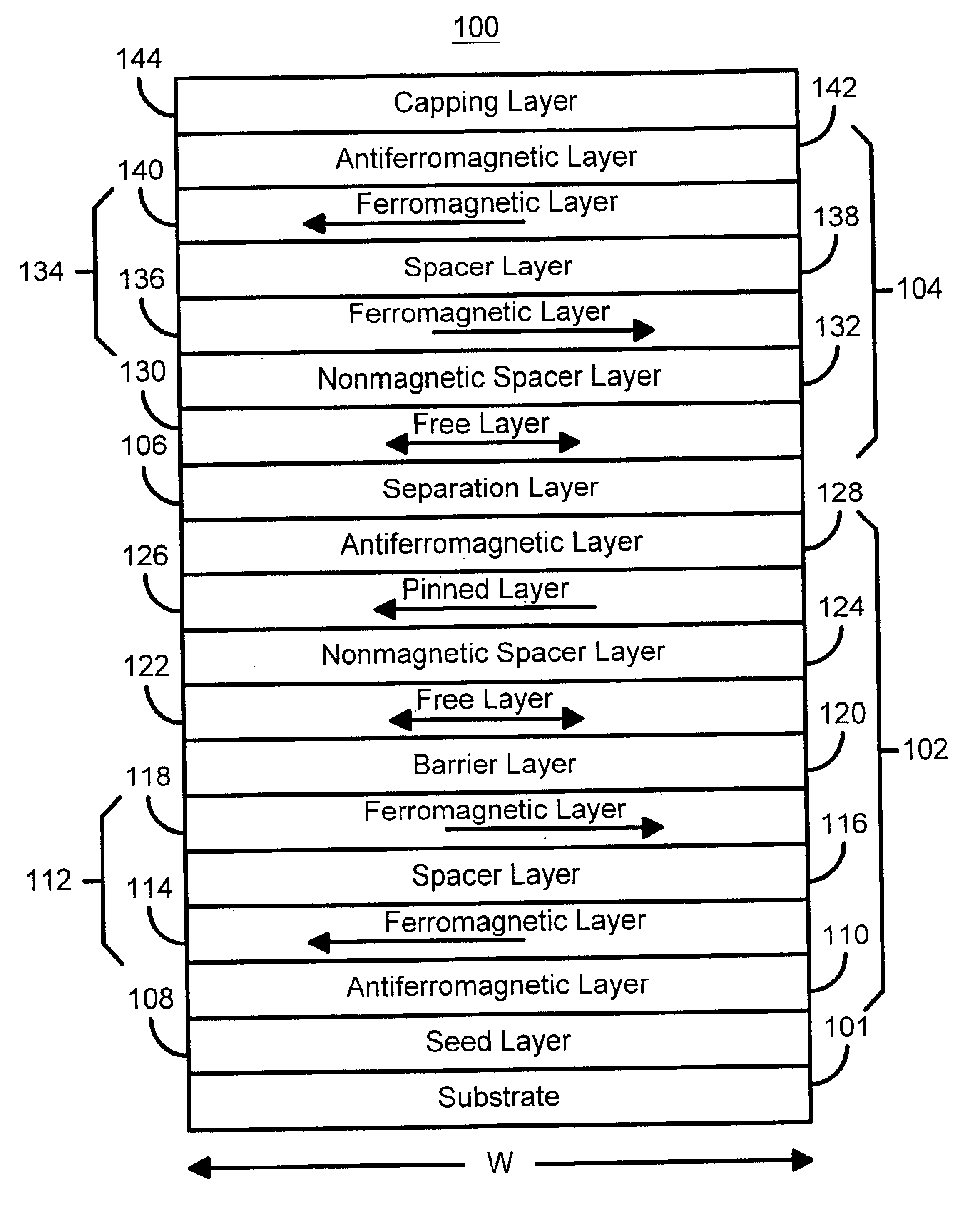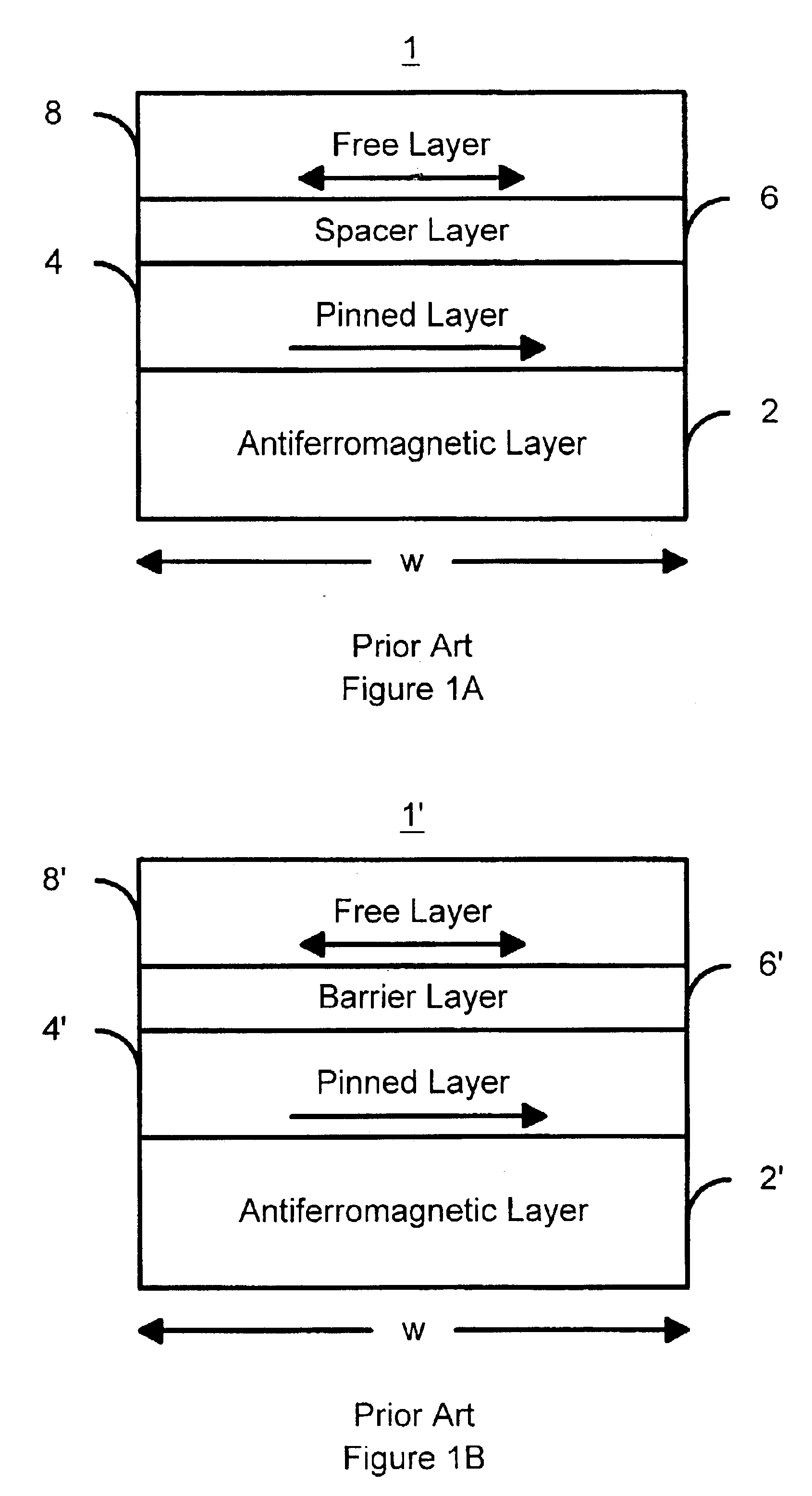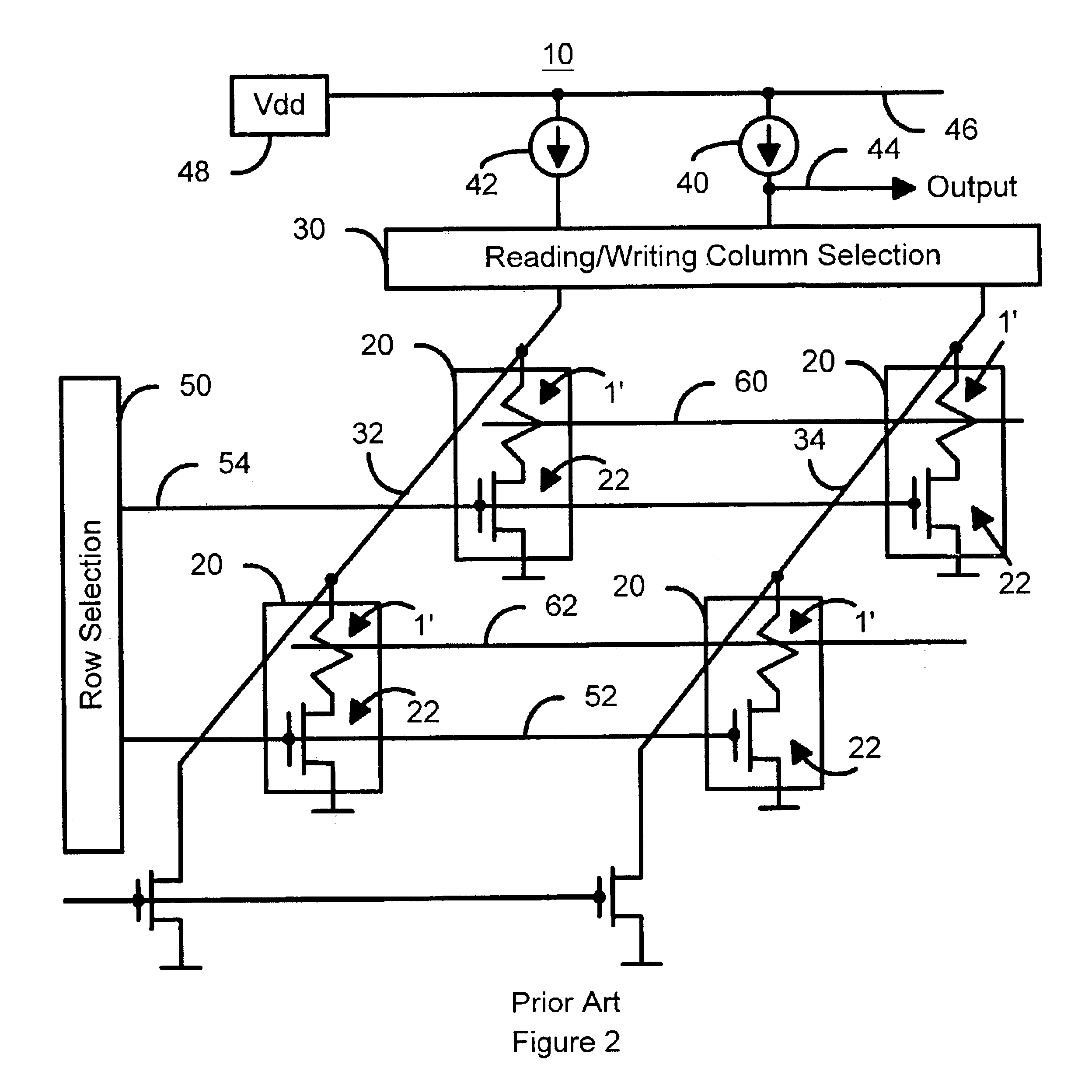Magnetostatically coupled magnetic elements utilizing spin transfer and an MRAM device using the magnetic element
a magnetic element and magnetic element technology, applied in static storage, information storage, digital storage, etc., can solve the problems of increasing the area and complexity of b>20/b>, limiting the write current amplitude, and increasing the cross talk and power consumption. , to achieve the effect of reducing the current for writing, improving the function of the spin valve, and high readout signal
- Summary
- Abstract
- Description
- Claims
- Application Information
AI Technical Summary
Benefits of technology
Problems solved by technology
Method used
Image
Examples
second embodiment
FIG. 4 is a diagram depicting a magnetic element 100′ in accordance with the present invention. The magnetic element 100′ has many of the same components as the magnetic element 100 depicted in FIG. 3. Consequently, analogous structures are labeled similarly for the magnetic element 100′ depicted in FIG. 4. In addition, these components are preferably fabricated in an analogous manner and made from similar materials as analogous components in the magnetic element 100. However, the spin valve is a dual spin valve 104′. In addition to the free layer 130′, the nonmagnetic spacer layer 132′, the pinned layer 134′, and the AFM layer 140′, the dual spin valve 104′ also includes a pinned layer 146 and a nonmagnetic spacer layer 148. In this embodiment the pinned layer 134′ is preferably a synthetic pinned layer including ferromagnetic layers 140′ and 136′ separated by a spacer layer 138′. Also In this embodiment the pinned layer 112′ is preferably a synthetic pinned layer including ferroma...
third embodiment
FIG. 5 is a diagram depicting a magnetic element 100″ in accordance with the present invention. The magnetic element 100″ has many of the same components as the magnetic element 100′ depicted in FIG. 4. Consequently, analogous structures are labeled similarly for the magnetic element 100″ depicted in FIG. 5. In addition, FIG. 5 also includes an additional dual spin valve 150. The second dual spin valve 150 includes a ferromagnetic pinned layer 152, a nonmagnetic spacer layer 160, a ferromagnetic free layer 162, another nonmagnetic spacer layer 164, a pinned layer 166 and an AFM layer 168. The nonmagnetic spacer layer 160 is preferably conductive and includes, but is not limited to, materials such as Cu. The pinned layer 152 is preferably a synthetic pinned layer including ferromagnetic layers 154 and 158 separated by a spacer layer 156. The materials used in the magnetic element 100″ are preferably the same as those used for analogous components of the magnetic element 100′ depicted...
fifth embodiment
FIG. 7 is a diagram depicting a magnetic element 200′ in accordance with the present invention. The magnetic element 200′ has many of the same components as the magnetic element 200′ depicted in FIG. 6. Consequently, analogous structures are labeled similarly for the magnetic element 200 depicted in FIG. 6. However, the dual spin valves 204′ and 208′ include synthetic pinned layers 234′ and 250′, respectively. The synthetic pinned layer 234′ includes ferromagnetic layers 252 and 256 separated by a spacer layer 254. The synthetic pinned layer 250′ includes ferromagnetic layers 258 and 262, separated by a spacer layer 260. The magnetic element 200′ thus functions in essentially the same manner as the magnetic element 200.
FIG. 8 is a diagram depicting a fifth embodiment of a magnetic element 200″ in accordance with the present invention. The magnetic element 200″ has many of the same components as the magnetic element 200″ depicted in FIG. 7. Consequently, analogous structures are labe...
PUM
 Login to View More
Login to View More Abstract
Description
Claims
Application Information
 Login to View More
Login to View More - R&D
- Intellectual Property
- Life Sciences
- Materials
- Tech Scout
- Unparalleled Data Quality
- Higher Quality Content
- 60% Fewer Hallucinations
Browse by: Latest US Patents, China's latest patents, Technical Efficacy Thesaurus, Application Domain, Technology Topic, Popular Technical Reports.
© 2025 PatSnap. All rights reserved.Legal|Privacy policy|Modern Slavery Act Transparency Statement|Sitemap|About US| Contact US: help@patsnap.com



